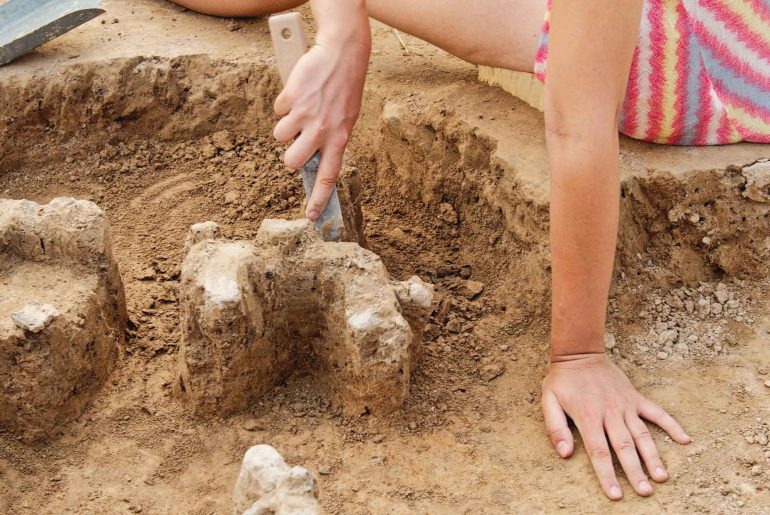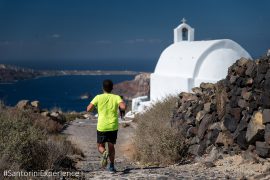A new Bronze Age settlement has been recently discovered in Therasia, an islet in the volcanic island group of Santorini, north-west of Nea Kameni, and part of the municipal unit of Oia.
Excavation works carried our by the Ionian University, the University of Crete, and the Cyclades Ephorate of Antiquities, under the auspices of Thira municipality and the Institute of Aegean Prehistory, and with the support of Clairy Palyvos, professor at the Aristotle University of Thessaloniki revealed a Bronze Age settlement at the southeastern end of Therasia, in an area already known as the Koimisi site, on the hill of the Assumption Monastery (or “Dormition” site). According to official news from the Ministry of Culture and Sports, we are dealing with an Early Cycladic and Mesocyclic settlement of the 3rd and 2nd millennium BC. The settlement is facing the Caldera in the east and the Aspronisi in the south.
“A section of the settlement was eroded and dragged into the cliff during the geological detachment of the island of Thirassia from Aspronissi as a result of the great volcanic eruption. The Koimisi settlement provides important data into the Thira-Thirassia complex during the early phases of the Bronze Age and also offers insight into the formation of the southeastern boundary of the pre-eruption caldera,” said the ministry in an official press statement.
The findings revealed buildings of various shapes and sizes all of which had in common the use of rocks from the local area for the foundations and the structure of the buildings. The homes occupied slope terraces making use of the natural environment. Large volcanic rocks emerge from the surface of the relief, defining the sides of the slope. They are also often incorporated into the various structures. Volcanic materials were also used in the buildings, as floor substrate, while plates from the strata of Therasia were used as roof tiles.
The excavations also revealed an elliptical building with monumental features, in addition to various floors of the settlement. The boundaries of the settlement were also investigated at the hillside. Based mainly on pottery, the settlement dates back to the Early Cycladic II, the Early Cycladic II / III and the Mid-Cycladic period, with phases analogous to Akrotiri. The finds include ceramics, tools, bones, shingles, wood, and other organic remains. Many of the finds will find their way to the Archaeological Museum of Thera, while others remain in laboratories for research.
The research of Thirassia, within the framework of the project “Diachronic islands cultures: the case of Therasia” started from an unknown landscape and aims to reveal a comprehensive history of Therasia.




